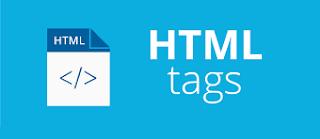HTML-The first Language of Website.
Hey Guys in this blog you will be fully friendly about what is HTML and what is the role of HTML in websites...So let's start......
- What is HTML?
HTML also know as (Hyper Text Markup Language) is a standard markup language for documents in a web browser.It can be assisted by technologies such as CSS(Cascading Style Sheets) and scripting language such as Javascript.HTML is used to make websites.The role of this Language is to give a structure to a website and also it is called as a SKELETON of a website.The file name extension of HTML is (.html) and (.htm).
- History of HTML.
In 1980, physicist Tim Berners-Lee, a contractor at CERN, proposed and prototyped ENQUIRE, a system for CERN researchers to use and share documents. In 1989, Berners-Lee wrote a memo proposing an Internet-based hypertext system. Berners-Lee specified HTML and wrote the browser and server software in late 1990. That year, Berners-Lee and CERN data systems engineer Robert Cailliau collaborated on a joint request for funding, but the project was not formally adopted by CERN. In his personal notes from 1990 he listed "some of the many areas in which hypertext is used" and put an encyclopedia first.
In 1980, physicist Tim Berners-Lee, a contractor at CERN, proposed and prototyped ENQUIRE, a system for CERN researchers to use and share documents. In 1989, Berners-Lee wrote a memo proposing an Internet-based hypertext system. Berners-Lee specified HTML and wrote the browser and server software in late 1990. That year, Berners-Lee and CERN data systems engineer Robert Cailliau collaborated on a joint request for funding, but the project was not formally adopted by CERN. In his personal notes from 1990 he listed "some of the many areas in which hypertext is used" and put an encyclopedia first.
The first publicly available description of HTML was a document called "HTML Tags", first mentioned on the Internet by Tim Berners-Lee in late 1991. It describes 18 elements comprising the initial, relatively simple design of HTML. Except for the hyperlink tag, these were strongly influenced by SGMLguid, an in-house Standard Generalized Markup Language (SGML)-based documentation format at CERN. Eleven of these elements still exist in HTML 4.
- What are HTML Tags?
Here’s an example of how we can use tags to transform text.
If we add the sentence “This is some text.” to our HTML file, it will simply display as regular text like this:
This is some text.
But if we want to have the sentence display in bold text, we can add a <b> opening tag before the text, and a </b> closing tag after the text. The “b” in the tag stands for “bold”.
If we add <b>This is some text.</b> to our HTML file, it will display like this:
This is some text.
If we want to have the sentence display in italic text, we can add an <i> opening tag before the text, and an </i> closing tag after the text. As you’ve probably guessed, the “i” stands for “italic”.
If we add <i>This is some text.</i> to our HTML file, it will display like this:
This is some text.
If we want to have the sentence display as a hyperlink, we can add an <a href=“www.google.com”> opening tag before the text, and an </a> closing tag after the text. Can you guess what the “a” stands for? This one’s a little harder… it stands for “anchor”.
If we add <a href=“www.google.com”>This is some text.</a> to our HTML file, it will display like this:
If we click on this hyperlink, it will take us to a different webpage. If you take a look at the code, you can probably guess which page this text links to.
Let’s put these three examples in to a simple HTML document:
<!DOCTYPE html>
<html>
<head>
<title>Page Title</title>
</head>
<body>
<b>This is some text.</b>
<i>This is some text.</i>
<a href=”www.google.com”>This is some text.</a>
</body>
</html>
If you save this file and open it in a browser, it should look like this:
Two Important Rules For Using Tags
There are two main rules you need to follow when using tags.
- You must always use angle brackets for tags. Square brackets and round brackets are used for different purposes in other programming languages. If you try to use square or round brackets in HTML, the browser won’t understand your code.
- Tags almost always come in pairs. This means that (except for a few special examples) you must always close a tag after opening it. If you forget to add a closing tag, the element you are trying to transform won’t display properly. In the worst case scenario, forgetting to close a tag may cause your page to crash. Many text editors will automatically add a closing tag, but it’s a good idea to start getting into the habit of writing tags in pairs. The best way to do this is to write the opening tag first, the closing tag next, then add the content between the tags last.
This all are the Basics things that you should know in the Beginning of the HTML Language....IF you are more intrested in Learning and Mastering the HTML Language Via Course then Please Contact me on Through my Email:-vianrodrigues333@gmail.com.
Thank you For Reading ❤❤




Comments
Post a Comment